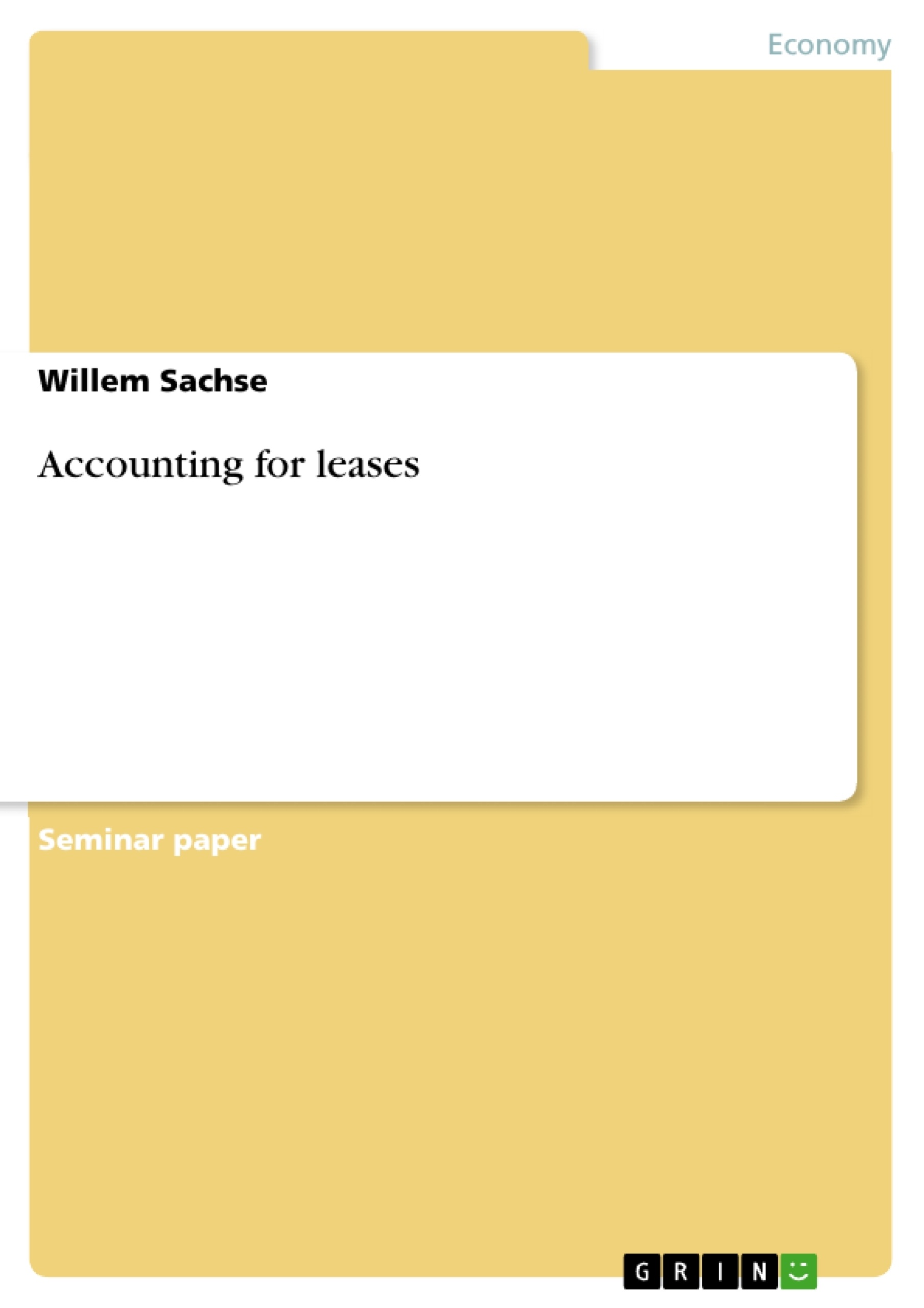The globalisation of capital markets is driving the increasing convergence of accounting standards worldwide. Recently, the progress toward attaining a global financial reporting framework has accelerated, and many significant steps have been taken. The most important step is the formation of the International Accounting Standards Board (IASB), which replaced the International Accounting Standards Committee (IASC), as part of a comprehensive restructuring of the international accounting standard-setting organisation in March 2001. Since then the acceptance and adoption of International Accounting Standards/International Financial Reporting Standards (IAS/IFRS), hereafter referred to as IFRS, has been growing rapidly. From 01 January 2005 all publicly traded European companies shall account for their consolidated accounts according to IFRS. In accordance with § 292a German Commercial Code (Handelsgesetzbuch,HGB)German parent companies may account for their consolidated accounts only according to international accepted accounting standards, according to prevailing opinion such are IFRS and the United States Generally Accepted Accounting Principles (USGAAP).Due to the Accounting Law Ref-ormation Act (Bilanzrechtsreformgesetz,BilReG)all publicly traded German companies shall account for their group accounts according to IFRS from 01 January 2005 except those that are already applying US GAAP (from 01 January 2007). Furthermore all enterprises may account for their individual accounts according to IFRS in addition to German Commercial Code which still is obligatory for tax, and profit determination and distribution purposes. Due to the commitment of applying IFRS for consolidated accounts international financial reporting issues need to undergo a closer examination. This paper deals with the accounting for leases. First current lease accounting standards are described with a focus on IAS 17 and its key differences to US GAAP and German Commercial Code. Next proposed improvements on current lease accounting standards are dealt with, focussing on new approaches discussed in the accounting and lease literature and a possible treatment of leases with optional features. After this the proposed approaches’ effect on profit determination and distribution is discussed. The final part offers a conclusion to some of the issues raised in this paper.
Inhaltsverzeichnis (Table of Contents)
- I. Introduction
- II. International financial reporting for leases
- A. Objectives of international financial reporting
- B. Accounting for leases under IAS 17
- 1. Classification of leases
- 2. Accounting for leases
- 3. Key differences between IFRS, US GAAP and German Commercial Code
- III. Improvements on current lease accounting
- A. Assets and liabilities: Different perceptions
- 1. The IASB's understanding of assets and liabilities
- 2. Should lease contracts be separated at all?
- 3. Leases and executory contracts
- B. Measurement and accounting for leases under the new approach
- 1. Proposed lessee accounting under the new approach
- 2. Leases with optional features
- 3. Financial components approach vs. whole asset approach
- 4. Recent developments
- C. Effects on profit determination and distribution
- 1. Operating leases vs. finance leases
- 2. Sale and leaseback transactions
- 3. Financial components approach vs. whole asset approach
- A. Assets and liabilities: Different perceptions
- IV. Conclusions
Zielsetzung und Themenschwerpunkte (Objectives and Key Themes)
This paper aims to critically analyse international financial reporting issues related to accounting for leases. It examines current lease accounting standards, particularly focusing on IAS 17 and its differences compared to US GAAP and the German Commercial Code. The paper also investigates proposed improvements to current standards, exploring new approaches to lease accounting and their implications for profit determination and distribution.
- Accounting for leases under international financial reporting standards
- Comparison of IFRS, US GAAP, and German Commercial Code
- Proposed improvements to lease accounting standards
- Analysis of different approaches to lease accounting
- Impact of proposed approaches on profit determination and distribution
Zusammenfassung der Kapitel (Chapter Summaries)
- I. Introduction This chapter introduces the paper's context, highlighting the increasing convergence of accounting standards worldwide due to globalization and the adoption of IFRS. It explains the relevance of IFRS for publicly traded European and German companies, emphasizing the importance of examining accounting issues like lease accounting within this framework.
- II. International financial reporting for leases This chapter delves into the objectives of international financial reporting and the specific standards for lease accounting under IAS 17. It outlines the classification of leases, different accounting methods, and key differences between IFRS, US GAAP, and the German Commercial Code.
- III. Improvements on current lease accounting This chapter explores potential improvements to current lease accounting standards, focusing on the debate surrounding the perception of assets and liabilities within lease contracts. It examines various proposals for accounting for leases with optional features, contrasting the financial components approach with the whole asset approach. The chapter also discusses the potential effects of these approaches on profit determination and distribution.
Schlüsselwörter (Keywords)
This paper explores the key concepts and issues surrounding lease accounting within the context of international financial reporting standards. This includes terms such as IFRS, IAS 17, US GAAP, German Commercial Code, asset recognition, liability recognition, financial components approach, whole asset approach, profit determination, and distribution.
- Quote paper
- Willem Sachse (Author), 2004, Accounting for leases, Munich, GRIN Verlag, https://www.grin.com/document/56562



